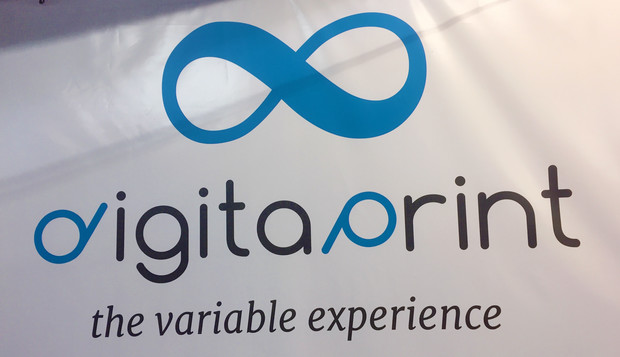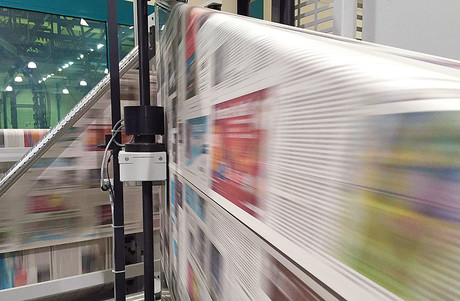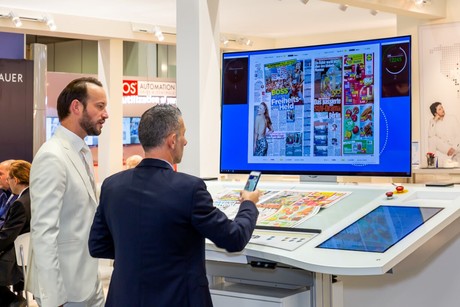Hubert Pédurand is driving the French INIGraph project, a service for the printing industry, supported by UNIIC, the French national printing union, in partnership with the French Ministry of Industry (DGE).
What is special about the “Digitaprint” print plant and why is it worth visiting and exploring what they do? Founded in November 2015, Digitaprint markets digital printing services, with or without variable data, as well as associated printing, for newspapers and related ancillary products. This alone may not be very exciting.
But Jean Pierre de Kerraoul, President of the publishing company Sogemedia, sais, “We are entering an exciting era of personalised print. As a news organisation we want to be at the forefront of content that is tailored and bespoke to our many audiences. This will also provide huge opportunities for our advertisers as we improve the relevance and price of ad space with the inclusion of micro-zoning of ads and content, as well as shorter runs and the introduction of variable editions related to neighbourhood news.”
Sogemedia specialises in local weekly newspapers and follows a clear strategy of hyper-local and personalised publishing. While other regional newspapers in the area are reducing their numbers of local editions to save costs in editorial, production and distribution, Sogemedia has chosen the exact opposite direction.
A recent example illustrates the strategy. Sogemedia took over a regional weekly that was published in a single edition with a circulation of 8,000 copies. They transformed the publication from one into 11 hyper-local editions.
 Gilles Mevel, CTO of Digitaprint, shows the stack of 11 hyper-local editions
Gilles Mevel, CTO of Digitaprint, shows the stack of 11 hyper-local editions
This is not an exception but the rule of the business. For example, the weekly newspaper “L’Observateur” is not only offered in 4 geographical versions but on top the reader can choose from 4 different content packages:
- Version 1 offers a standard package, including sports and general news pages.
- Version 2 has no sports news, but includes topics like kitchen, horoscope, creative hobbies, games and general news.
- Version 3 comes without general news, but with gardening, an arts section and sports pages.
- Version 4 finally has no sports and no general news, but the special topics of versions 2 and 3 instead.
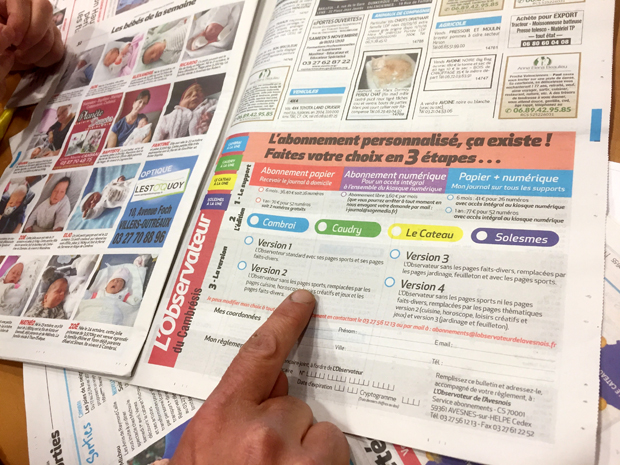 The readers can choose the distribution channel, the geographic edition and the content package
The readers can choose the distribution channel, the geographic edition and the content package
At the printing plant we talked to Chief Technical Officer, Gilles Mevel, who explained the concept of “variable content” (the slogan of Digitaprint is “the variable experience”) and personalisation in detail. He also walked us through the production facilities and demonstrated the technical process.
Localisation and personalisation are not only a service to the readers but attract new advertising as well. If there are two competing car dealers offering the same brand in 2 of 4 villages, a newspaper that covers all 4 villages with only one edition is not attractive as a marketing platform for each of them. But if you offer 4 local editions, one for each village, a car dealer would probably advertise in the edition of his region and maybe also in a region in which the competing dealer is not active. The same is true for the other car dealer. Instead of attracting none you can get both as advertising partners by hyper-local editions.
The advantages of the content packages for attracting targeted advertising of local shops and service companies are very obvious.
Sogemedia can follow this targeting strategy because it uses the digital printing system of Digitaprint. The production system includes a Kodak Prosper 6000C inkjet press connected to a MEGTEC reel stand on the in-feed and a manroland FoldLine on the output side. RIMA equipment completes the digital production line. The system installation started in September 2015 with the press. In November 2015 the FoldLine was installed and in February the first copies with variable content were printed.
Five months ago variable content publishing started. Today they print 18 titles with 100 variations. 80 percent of the products are printed for the region and 20 percent for customers from outside. The product range includes weekly newspapers, magazines and catalogues (in preparation). 18 employees work in three shifts and produce weekly newspapers from Tuesday through Thursday, 90,000 copies per week with a page count between between 32 and 40.
With their inkjet production system they can handle paper grades from 45 up to 270 g/m2. The print resolution can be adjusted and ranges up to 600 x 900 dpi. When Gilles Mevel compares the inkjet process with conventional printing he says: “We are not printing, but ‘pixelising’ the paper.”
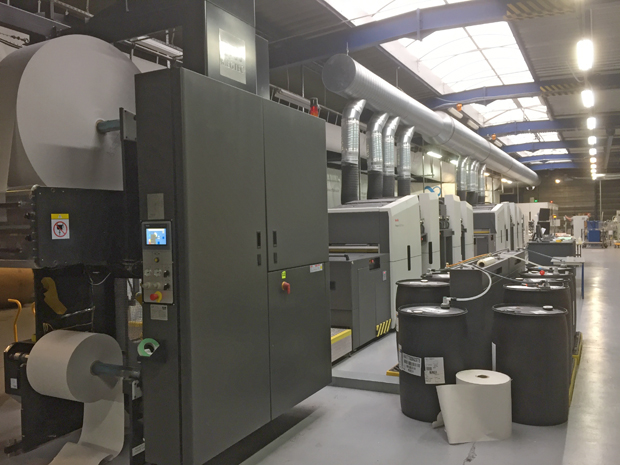 The long online inkjet production line from reel-stand to finishing
The long online inkjet production line from reel-stand to finishing
|| Here you can find many more photos of Digitamedia ||
Gilles Mevel says: “Sure, being a pioneer in digital newspaper printing that produces its entire print run digitally also involves a bit of adventure. But we will prove that digital print opens up promising publishing and commercial outlooks on the shrinking print media market.”

